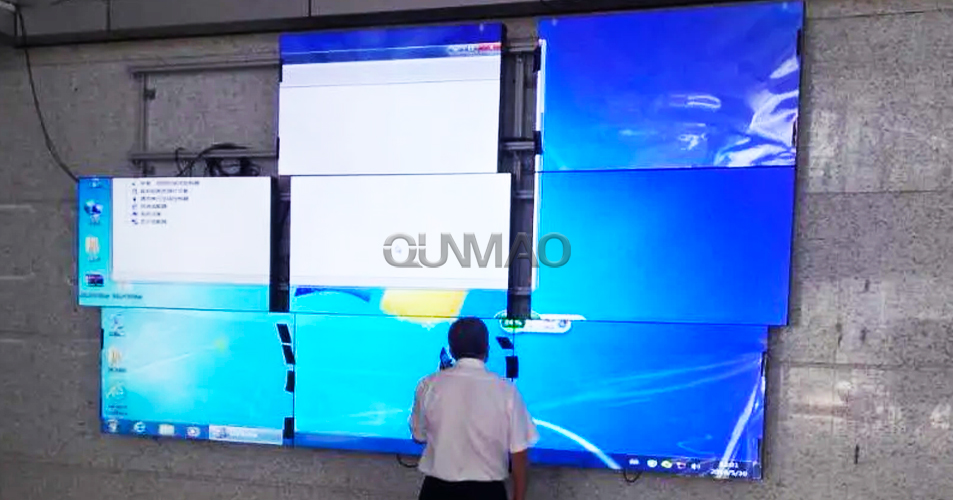
Qunmao Display's LCD splicing screen uses LCD liquid crystal backlight technology. Its display technology is the same as that of home
TVs, except that the resolution is usually 1920*1080. Currently, home TVs have reached 3840*2160.
The LED displays on the market are based on light-emitting diode technology. They use three primary color lamp bead chips to be
packaged into pixels for display. Our common traffic lights, billboards, etc. are all LED displays.
The biggest advantage of Qunmao Display's LCD splicing screen is that it can achieve high-definition display, that is, 1920*1080, and
can display high-definition images and videos. However, due to the relatively large pixel spacing of LED displays, the resolution is lower
for the same display area. Although the resolution can be superimposed to high definition, the display area required is larger and the
viewing effect is obviously not as good as LCD.
LCD splicing screens have splicing gaps of different sizes, ranging from 0.88 to 5.5mm on both sides, so there will be physical black edges
between the screens after splicing, which will affect the viewing effect when the entire screen displays a picture, while LED Then there
will be no such worries. No matter how it is spliced, the LED display will have no black edges.
With its own technology, LCD splicing screens are mainly used in fields that require high-definition display and can realize splicing,
segmentation and other functions, such as product exhibition halls, conference rooms, news broadcast stations, monitoring centers,
etc. LEDs are mainly used in outdoor squares, shopping malls, conference lecture halls and other fields for long-distance viewing.
Since LCD itself is not waterproof, it is mainly used indoors, while LED can be used in various occasions, both indoors and outdoors.

